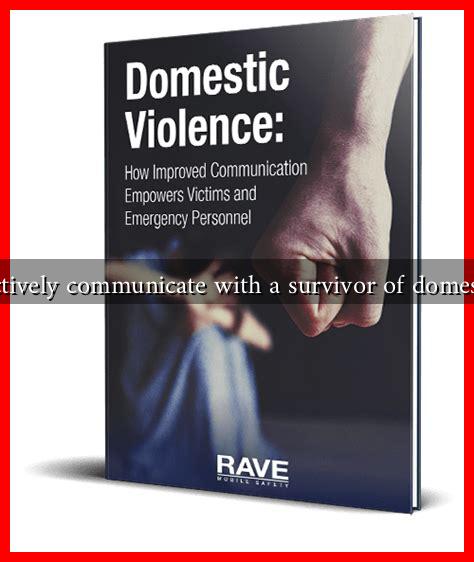-
Table of Contents
How to Effectively Communicate with a Survivor of Domestic Violence
Communicating with a survivor of domestic violence requires sensitivity, understanding, and a commitment to creating a safe space for them to express their feelings and experiences. Domestic violence is a pervasive issue, affecting millions of individuals worldwide. According to the World Health Organization, approximately 1 in 3 women and 1 in 4 men have experienced physical violence from an intimate partner. This article aims to provide guidance on how to communicate effectively with survivors, ensuring they feel heard, respected, and supported.
Understanding the Impact of Domestic Violence
Before engaging in conversation, it is crucial to understand the profound effects of domestic violence on survivors. The trauma can lead to a range of emotional and psychological challenges, including:
- Post-Traumatic Stress Disorder (PTSD)
- Anxiety and depression
- Low self-esteem and self-worth
- Difficulty trusting others
- Isolation from friends and family
Recognizing these challenges can help you approach the conversation with empathy and patience.
Creating a Safe Environment
Safety is paramount when communicating with a survivor of domestic violence. Here are some strategies to create a supportive environment:
- Choose a private setting: Ensure the conversation takes place in a confidential space where the survivor feels secure.
- Be non-judgmental: Approach the conversation without preconceived notions or judgments about their experiences.
- Listen actively: Show genuine interest in what they have to say. Use verbal and non-verbal cues to demonstrate your attentiveness.
- Respect their boundaries: Allow the survivor to share only what they are comfortable discussing. Avoid pushing them to disclose more than they wish to.
Effective Communication Techniques
When engaging in conversation, consider the following techniques to enhance communication:
- Use open-ended questions: Encourage dialogue by asking questions that require more than a yes or no answer. For example, “Can you tell me more about your experience?”
- Validate their feelings: Acknowledge their emotions and experiences. Phrases like “It’s understandable to feel that way” can help them feel validated.
- Be patient: Survivors may take time to articulate their thoughts. Allow pauses in the conversation without rushing them.
- Offer support, not solutions: Instead of trying to fix their problems, focus on being a supportive listener. Ask how you can help rather than assuming what they need.
Recognizing Signs of Distress
During the conversation, be aware of signs that the survivor may be feeling overwhelmed or distressed. These can include:
- Changes in body language (e.g., crossing arms, avoiding eye contact)
- Increased agitation or anxiety
- Withdrawal from the conversation
If you notice these signs, it may be helpful to gently shift the topic or take a break. Always prioritize their emotional well-being.
Resources and Support
Encouraging survivors to seek professional help can be beneficial. Provide them with information about local resources, such as:
- National Domestic Violence Hotline
- RAINN (Rape, Abuse & Incest National Network)
- Local shelters and counseling services
These resources can offer additional support and guidance tailored to their needs.
Conclusion
Effectively communicating with a survivor of domestic violence is a delicate process that requires empathy, patience, and understanding. By creating a safe environment, employing effective communication techniques, and recognizing signs of distress, you can foster a supportive dialogue. Remember that your role is to listen and validate their experiences, not to solve their problems. Encouraging them to seek professional help can also be a vital step in their healing journey. Ultimately, your compassion and support can make a significant difference in their recovery process.


